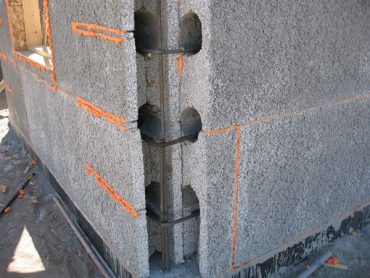
John Bleasby
A new look at concrete means revisiting the old
Canadian ContractorEnvironmental concerns are driving concrete innovation
Ancient Roman structures have certainly stood the test of time. In fact, some experts suggest that they are getting stronger with age. One reason is the nature of the concrete mix used. The Romans used seawater, and that is inspiring researchers on the U.S. West Coast to take a look at a mix of volcanic rock and salt water, hoping for improvements in the resistance of sea walls to flooding.

You have to hand it to the Romans. Their structures sure have staying power!
It’s part of an industry-wide and global effort to improve a staple material construction of both residential or large-scale commercial projects. Much of this is driven by concerns about the environmental impact of concrete’s production processes. Concrete production reportedly accounts for five per cent of global carbon dioxide (CO2) emissions when one includes mining, transportation, kiln heating process and the limestone-to-clinker chemical conversion. As a result, new research at institutions like MIT in the USA are looking at concrete’s atomic composition to learn more about both improving concrete’s durability and reducing its environmental consequences.
Canadians are on the leading edge of concrete developments
U.S. on-line publication Construction Dive outlines how University of British Columbia researchers are investigating eco-friendly ductile cementitious composite concrete reinforced by polymer-based fibres. “The material is similar to steel’s molecular make-up,” author Laurie Cowin writes. “Nearly 70% of the cement is replaced with fly ash, making it a more sustainable material; this is especially important because although cement comprises only 10 per cent of an average concrete mix, its production accounts for 80 per cent of the environmental impact.”
New technology is also being applied to block products. Coming soon to a building material supplier near you might be polystyrene blocks and bricks made from a mix of cement silica aggregate and recycled polystyrene granules, plus setting accelerators. These lighter weight blocks and bricks reduce worker fatigue and speed up the assembly of walls. Their insulation qualities are a side bonus which pleases designers as well.
“The product uses two water products in its composition,” says interestingengineering.com. “First, it uses fly ash from thermal power stations. This by-product of the plants is captured by electrostatic precipitators. It contains high levels of silica which contributes to the polystyrene bricks thermal properties. The bricks also contain recycled polystyrene. Polystyrene bricks are just one alternative product to traditional clay or concrete bricks.”
BluBloc based in in Portland, Oregon is promoting their version of polystyrene blocks as an alternative to ICF. The benefit that excites environmentalists is that BluBloc uses 85 per cent recycled ground-up polystyrene foam (Styrofoam) as a binder for the 15 per cent cement component, rather new petroleum-based Styrofoam. From a performance standpoint, BluBloc claims the many of the same advantages as ICF: increased insulation properties, soundproofing, and disaster, pest, and moisture resistance. Designers are also intrigued by the ability to carve the BluBloc surface using a chainsaw or a rasp, for example, thus opening up many new creative possibilities.
Australian researchers are working with plastics
Recycled plastics may soon find their way into poured concrete too. In Australia, Queensland-based company Fibercon has developed Fibercon RMP47, a concrete reinforced with recycled plastic. The Guardian reports that recycled plastic in reinforced concrete results in significant environmental savings. “Steel is often used as a reinforcing agent for this type of concrete, and is very energy-intensive. Using plastic to reinforce concrete instead of steel can reduce carbon dioxide production by about 50 per cent. However, with recycled plastic, you can save 50 per cent more carbon dioxide than you could with virgin plastic – because you are using plastic that has already been made and re-purposing it.”
Irreplaceable concrete
Concrete’s status as a prime building material through the centuries is due to the fact that nothing really can replace it. Today, in addition to strength and durability, many look to concrete’s thermal mass properties when considering the design of heating and cooling systems. Recent advances in pigmentation also point to potentially novel uses for the material from a design standpoint. Clearly, concrete does not have an entirely bland and grey future.
Got feedback? Make your opinion count by using the comment section below,
or by sending an email to:
JBleasby@canadiancontractor.ca
Follow John on Instagram and on Twitter for notifications about his latest posts

![]()


Leave a Reply